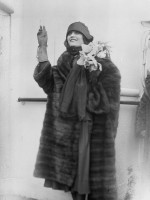Paul Davidson is a Producer and Cinematography Allemand born on 30 march 1867 at Giżycko (Pologne)

Paul Davidson (30 March 1867 – 18 July 1927) was a German film producer.
Back in Frankfurt he founded the "Allgemeine Kinematographen-Theater Gesellschaft, Union-Theater für lebende und Tonbilder GmbH" (A.K.T.G.) on 21 March 1906 and opened Mannheim’s first permanent cinema, the Union-Theater (U.T.). Further cinemas followed in Frankfurt, Düsseldorf, Cologne, Strasbourg, Amsterdam and Brussels.
On 4 September 1909 Davidson opened the Union-Theater at Berlin, Alexanderplatz. Another Union-Theater was opened at Berlin's Unter den Linden on 21 August 1910, by 1910 Davidson had built up a "sizeable chain of 600–1000 seater luxury cinemas". On 2 August 1913 the Union-Palast, Kurfürstendamm, one of the first buildings of Berlin exclusively built as a movie theater, premiered with Max Reinhardt’s "Die Insel der Seligen".
In March 1910 Davidson founded the Projektions-Aktiengesellschaft Union (PAGU), Germany’s first joint-stock company in film industry and the first to integrate production, distribution and equipment hire.
Following the success of Asta Nielsen’s The Abyss he founded the Internationale Film-Vertriebs-Gesellschaft in conjunction with Nielsen and her husband Urban Gad on 1 June 1911. The company held the European rights on all Nielsen films and Nielsen became a “scintillating international film star” with an annual fee of 85,000 Marks in 1914 alone.
Davidson described Nielsen as the decisive factor for his move to film productions:
I had not been thinking about film production. But then I saw the first Asta Nielsen film. I realised that the age of short film was past. And above all I realised that this woman was the first artist in the medium of film. Asta Nielsen, I instantly felt could be a global success. It was International film Sales that provided Union with eight Nielsen films per year. I built her a studio in Tempelhof, and set up a big production staff around her. This woman can carry it ... Let the films cost whatever they cost. I used every available means – and devised many new ones – in order to bring the Asta Nielsen films to the world.
In late 1912 the PAGU moved to Berlin and opened a studio in Berlin-Tempelhof (Davidson would also play an important role in the founding of the Babelsberg studios). The PAGU engaged directors like Ernst Lubitsch and Paul Wegener as well as actors like Asta Nielsen, Fern Andra, Pola Negri, Ossi Oswalda, Emil Jannings and Harry Liedtke.
In January 1914 PAGU was merged with Jules Greenbaum’s company to form PAGU-Vitascope, however, the project, including a cooperation with the French Pathé Freres ended at the outbreak of World War I. In August 1915 Davidson sold his cinemas to the Danish Nordisk Film.
PAGU became part of the newfounded Universum Film AG (UFA) in 1917 and Davidson worked as the UFA’s artistic director and head of production.
In 1920 he left the UFA to produce Lubitsch’s "Das Weib des Pharao" (The Wife of the Pharaoh) and "Die Flamme" (The Flame) within the short-living Europäische Film-Allianz (EFA).
When Lubitsch moved to Hollywood in 1922, Davidson had produced 39 movies directed by Lubitsch. From 1922 he produced pictures independently, but exclusively for the UFA. He canceled his contract early in 1927 and committed suicide on 18 July that year.
Source : Wikidata
Paul Davidson

- Infos
- Photos
- Best films
- Family
- Characters
- Awards
Nationality German
Birth 30 march 1867 at Giżycko (Pologne)
Death 1 january 1927 (at 59 years) at Dresden (German)
Birth 30 march 1867 at Giżycko (Pologne)
Death 1 january 1927 (at 59 years) at Dresden (German)
Paul Davidson (30 March 1867 – 18 July 1927) was a German film producer.
Biography
Paul Davidson was born in Lötzen, East Prussia (modern Giżycko, Poland) the son of Moritz Davidson. He initially worked as a commercial traveller in the textile industry and became the manager of a security firm in Frankfurt am Main in 1902. On vacation to Paris he saw his first movie, a Georges Méliès film, in a cinema.Back in Frankfurt he founded the "Allgemeine Kinematographen-Theater Gesellschaft, Union-Theater für lebende und Tonbilder GmbH" (A.K.T.G.) on 21 March 1906 and opened Mannheim’s first permanent cinema, the Union-Theater (U.T.). Further cinemas followed in Frankfurt, Düsseldorf, Cologne, Strasbourg, Amsterdam and Brussels.
On 4 September 1909 Davidson opened the Union-Theater at Berlin, Alexanderplatz. Another Union-Theater was opened at Berlin's Unter den Linden on 21 August 1910, by 1910 Davidson had built up a "sizeable chain of 600–1000 seater luxury cinemas". On 2 August 1913 the Union-Palast, Kurfürstendamm, one of the first buildings of Berlin exclusively built as a movie theater, premiered with Max Reinhardt’s "Die Insel der Seligen".
In March 1910 Davidson founded the Projektions-Aktiengesellschaft Union (PAGU), Germany’s first joint-stock company in film industry and the first to integrate production, distribution and equipment hire.
Following the success of Asta Nielsen’s The Abyss he founded the Internationale Film-Vertriebs-Gesellschaft in conjunction with Nielsen and her husband Urban Gad on 1 June 1911. The company held the European rights on all Nielsen films and Nielsen became a “scintillating international film star” with an annual fee of 85,000 Marks in 1914 alone.
Davidson described Nielsen as the decisive factor for his move to film productions:
I had not been thinking about film production. But then I saw the first Asta Nielsen film. I realised that the age of short film was past. And above all I realised that this woman was the first artist in the medium of film. Asta Nielsen, I instantly felt could be a global success. It was International film Sales that provided Union with eight Nielsen films per year. I built her a studio in Tempelhof, and set up a big production staff around her. This woman can carry it ... Let the films cost whatever they cost. I used every available means – and devised many new ones – in order to bring the Asta Nielsen films to the world.
In late 1912 the PAGU moved to Berlin and opened a studio in Berlin-Tempelhof (Davidson would also play an important role in the founding of the Babelsberg studios). The PAGU engaged directors like Ernst Lubitsch and Paul Wegener as well as actors like Asta Nielsen, Fern Andra, Pola Negri, Ossi Oswalda, Emil Jannings and Harry Liedtke.
In January 1914 PAGU was merged with Jules Greenbaum’s company to form PAGU-Vitascope, however, the project, including a cooperation with the French Pathé Freres ended at the outbreak of World War I. In August 1915 Davidson sold his cinemas to the Danish Nordisk Film.
PAGU became part of the newfounded Universum Film AG (UFA) in 1917 and Davidson worked as the UFA’s artistic director and head of production.
In 1920 he left the UFA to produce Lubitsch’s "Das Weib des Pharao" (The Wife of the Pharaoh) and "Die Flamme" (The Flame) within the short-living Europäische Film-Allianz (EFA).
When Lubitsch moved to Hollywood in 1922, Davidson had produced 39 movies directed by Lubitsch. From 1922 he produced pictures independently, but exclusively for the UFA. He canceled his contract early in 1927 and committed suicide on 18 July that year.
Usually with
Filmography of Paul Davidson (19 films)
Producer

Mad Love (1921)
, 1h22Directed by Dimitri Buchowetzki
Genres Drama, Romance
Actors Pola Negri, Alfred Abel, Albert Steinrück, Elsa Wagner
Roles Producer
Rating65%





Richard De La Croix has a brother, Andreas, who has been driven insane by a notorious vamp and socialite named Sappho. A man-about-town named Teddy takes Richard to the Odeon to meet her, but when Sappho actually meets Richard, he is unaware that she is the woman who drove Andreas insane. Sappho genuinely falls in love with Richard, and decides to leave her vampy ways behind her so that she can have him.

The Wildcat (1921)
, 1h19Directed by Ernst Lubitsch
Origin German
Genres Drama, Comedy, Comedy-drama, Romantic comedy, Romance
Actors Pola Negri, Victor Janson, Wilhelm Diegelmann, Hermann Thimig, Paul Graetz, Paul Biensfeldt
Roles Producer
Rating69%





The commander of an isolated border fortress receives word that a Lieutenant Alexis has been assigned there as punishment. This delights his wife and daughter. Elsewhere, vast mobs of women line the streets to bid Alexis goodbye (as does a horde of young children who call him Daddy).

Anna Boleyn (1920)
, 1h58Directed by Ernst Lubitsch
Origin German
Genres Drama, Biography, Historical
Themes Political films, Films about royalty
Actors Henny Porten, Emil Jannings, Paul Hartmann, Friedrich Kühne, Aud Egede-Nissen, Hedwig Pauly-Winterstein
Roles Producer
Rating64%





Anne Boleyn rentre en bateau dans son pays natal, l'Angleterre, après plusieurs années passées en France. Elle habite chez son oncle, le duc de Norfolk, et y retrouve son amour de jeunesse, Heinrich Norris, qui est entre-temps devenu chevalier au service du roi Henri VIII d'Angleterre.
 , 1h31
, 1h31Directed by Carl Boese, Paul Wegener
Genres Science fiction, Thriller, Fantastic, Fantasy, Horror
Themes Films about religion, Films about Jews and Judaism, Golem
Actors Paul Wegener, Albert Steinrück, Ernst Deutsch, Otto Gebühr, Greta Schröder, Loni Nest
Roles Producer
Rating71%





Set in Jewish ghetto of medieval Prague, the film begins with Rabbi Loew, the head of the city's Jewish community, reading the stars. Loew predicts disaster for his people and brings his assistant to inform the elders of the community. The next day the Holy Roman Emperor signs a royal decree declaring that the Jews must leave the city before the new moon. The Emperor sends the knight Florian to deliver the decree. Loew meanwhile begins to devise a way of defending the Jews.
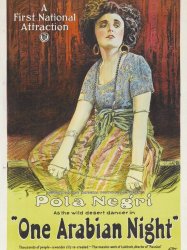
Sumurun (1920)
, 1h43Directed by Ernst Lubitsch
Genres Drama, Adventure, Romance
Themes Children's films
Actors Ernst Lubitsch, Pola Negri, Paul Wegener, Jenny Hasselquist, Aud Egede-Nissen, Harry Liedtke
Roles Producer
Rating60%





A company of travelling performers arrive at a fictional oriental city. It includes the beautiful dancer Janaia, the hunchback clown Yeggar who is lovesick for Janaia and the Old Lady who loves Yeggar. The Slave Trader Achmed wants to sell Janaia to the Sheik for his harem. At the Palace, the Sheik finds out that his favourite, Sumurun, is in love with Nur al Din, the handsome clothes merchant. He wants to condemn her to death but his son obtains her pardon. After seeing Janaia dancing, the Sheik is keen to buy her. Yeggar is desperate and takes a magic pill which make him look dead. His body is hidden in a chest. The women from the harem come to Nur al Din's shop and hide him in a chest so that he can be brought into the Palace. The chest containing Yeggar's body is also brought to the Palace and the Old Lady manages to revive him. The Sheik finds Janaia making love to his son and kills both of them. He then finds Sumurun making love to Nur al Din and wants to kill them but he is stabbed in the back by Yagger.

Madame DuBarry (1919)
, 1h53Directed by Ernst Lubitsch
Origin German
Genres Drama, Historical
Themes Politique, Political films, Histoire de France, French Revolution films, Films about royalty
Actors Pola Negri, Emil Jannings, Harry Liedtke, Bernhard Goetzke, Paul Wegener, Eduard von Winterstein
Roles Producer
Rating65%





Histoire d'amour entre deux personnages, histoire d'une femme du peuple qui réussit grâce à ses liaisons avec des hommes de pouvoirs à s'élever dans la société révolutionnaire française. Madame du Barry arrive notamment à intégrer la cour de Louis XV et à devenir la favorite de celui-ci. L'amour déçu, présent dans tout le film, est le moteur de l'action révolutionnaire.
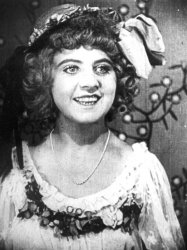
The Doll (1919)
, 58minutesDirected by Ernst Lubitsch
Genres Comedy, Romantic comedy, Fantasy, Romance
Actors Ossi Oswalda, Hermann Thimig, Victor Janson, Josefine Dora, Jakob Tiedtke, Paul Morgan
Roles Producer
Rating73%





Le baron de Chanterelle, dépourvu de descendance, presse son neveu de se marier. Mais Lancelot, fuyant la horde des prétendantes convoquées par son oncle, se réfugie dans un monastère. Les moines voient dans le jeune homme un bon moyen de renflouer les caisses de la communauté : puisque son oncle lui promet une belle dot s'il prend femme, ils lui suggèrent un mariage fictif avec une poupée mécanique.
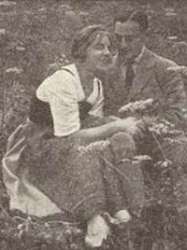
My Wife, the Movie Star (1919)
Directed by Ernst Lubitsch
Genres Comedy
Actors Ossi Oswalda, Victor Janson, Paul Biensfeldt, Hanns Kräly
Roles Producer
Rating58%





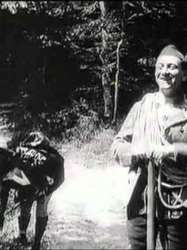
Meyer from Berlin (1919)
, 58minutesDirected by Ernst Lubitsch
Genres Comedy
Actors Ernst Lubitsch, Ossi Oswalda, Erich Schönfelder
Roles Producer
Rating60%





Sally Meyer, a young Berliner, persuades his Doctor to convince his wife that he is ill, so that he is able to take a holiday in the Austrian Alps in order to pursue women. Meyer dresses up in what he considers Tyrolean attire. However, he mistakenly travels to the Bavarian Alps rather than Austria. Meyer becomes infatuated with Kitty, a young, attractive woman at the hotel where he is staying. His pursuit of her angers many of her other suitors who are also staying at the hotel. In order to impress Kitty, Meyer agrees rather reluctantly to climb Mount Watzmann. While they are approaching the summit, both Meyer's wife and Kitty's fiancée unexepectedly arrive from Berlin.
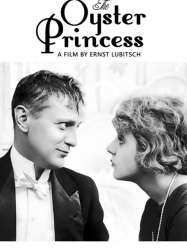
The Oyster Princess (1919)
, 1hDirected by Ernst Lubitsch
Origin German
Genres Comedy
Actors Victor Janson, Ossi Oswalda, Harry Liedtke, Julius Falkenstein, Curt Bois, Albert Paulig
Roles Producer
Rating71%





Act 1 The American oyster King dictates to a room full of typing writing women. He smokes a large cigar held by one of his many butlers at his side. One butler scurrys in to say, “Your daughter is in a fit of raging madness” Ossi, in the other room, has destroyed the room by throwing everything onto the floor. Mister Quaker oddly jogs through the house to see Ossi on the other side of the mansion. When Mister Quaker peeps in, Ossi throws newspapers at him. He asks, “Why are you throwing those newspapers?” and the brat replies with, “Because all of the vases are broken.” Ossi is clearly angered, and in a big mess. She shows her father a newspaper that says the Shoe cream king’s daughter has married to a count. This is what Ossi is upset about. Mister Quaker is not impressed but tells Ossi that he will buy her a prince. With this, Ossi can’t contain herself, jumps up, and hugs her dad ever so enthusiastically. She is so happy, she could smash the house with joy!

Carmen (1918)
, 1h20Directed by Ernst Lubitsch
Origin German
Genres Drama
Actors Pola Negri, Harry Liedtke, Leopold von Ledebur, Wilhelm Diegelmann, Margarete Kupfer, Sophie Pagay
Roles Producer
Rating58%





The story is told by a man at a camp-fire who says that it took place many years before.

The Eyes of the Mummy (1918)
, 1h3Directed by Ernst Lubitsch
Origin German
Genres Drama, Adventure, Horror
Actors Pola Negri, Emil Jannings, Harry Liedtke
Roles Producer
Rating54%





A young, wealthy painter named Wendland travels to Egypt, where he hears about the tomb of Queen Ma, a site far out into the desert that has reportedly driven everyone who has visited it mad. Intrigued, the painter arranges to be taken to the tomb. When he arrives, he is greeted by an Egyptian native named Radu, who leads him to a coffin in a dark room. There he sees the eyes behind the coffin slowly open and come to life, just before the Egyptian tries to attack him. The painter wards off Radu, and finds that the coffin lid is actually an entrance to a small adjacent room, where a helpless young girl, also named Ma, is held prisoner by the Egyptian’s Svengali-like hypnotic powers. Wendland rescues Ma from the site and takes her back to Europe with him, making her his wife. Radu, heartbroken at losing Ma, wanders into the desert and faints on the hot sands. A wealthy Prince finds him, nurses him back to health, and makes him his personal servant. When Radu comes to, he swears vengeance on Ma for leaving him.

The Yellow Ticket (1918)
, 58minutesDirected by Paul L. Stein, Victor Janson
Origin German
Genres Drama
Themes Films about religion, Films about sexuality, Erotic films, Films about prostitution, Films about Jews and Judaism, Erotic thriller films
Actors Pola Negri, Harry Liedtke, Victor Janson, Adolf E. Licho, Margarete Kupfer
Roles Producer
Rating62%





Pola Negri plays Lea, a bright adolescent girl who lives in the Jewish ghetto of Warsaw with her ill father. She loves to read, and intends to study medicine at a university in St. Petersburg in the hopes of making her father well again. Her father dies suddenly and her tutor, Ossip Storki, is called away to work for the governor. When she goes to Russia, she learns that Jewish women are only allowed to work as sex workers with the benefit of a "yellow passport", otherwise they will be taken to prison. She applies for a yellow passport and takes up residency at a brothel. Upon finding the identification papers of her tutor's deceased sister Sophie in a book her tutor gave her, Lea applies to the University with the deceased sister's identification papers and is accepted. So begins an unhappy life of studying by day and receiving scholastic honors, while reluctantly working as a party girl at night. Her fellow students, including a boy named Dimitri who is in love with her, then find her out. Dimitri in particular is crushed to learn of Lea's double life. Lea realizes that this will be the end of her scholastic career, and attempts suicide.

I Don't Want to Be a Man (1918)
, 41minutesDirected by Ernst Lubitsch
Genres Comedy, Romance
Themes Films about sexuality, LGBT-related films, Transgender in film, LGBT-related films, LGBT-related film, Cross-dressing in film
Actors Ossi Oswalda, Curt Goetz, Margarete Kupfer, Victor Janson
Roles Producer
Rating67%





High-spirited young Ossi Oswalda is the bane of her uncle and governess' existence. She insists on playing poker and smoking and talks with strange men on the street. When her uncle leaves to take up a new job, she looks forward to enjoying new freedom. Her hopes are dashed when her new guardian Dr. Kersten proves to be strict and unyielding. Frustrated with her cloistered life, Ossi sneaks out on the town dressed as a young man. She finds that being a man has its own disadvantages when she discovers she is not given the same gentle treatment when she is masquerading as a male. She decides to attend a lavish ball in her new disguise. Soon, Dr. Kersten appears at the ball trying to woo a young lady and Ossi vengefully tries to steal her away from her hated guardian. Eventually, another man attracts the woman's attention, and the disguised Ossi and the doctor reconcile. The two proceed to bond over cigars and champagne. After the ball is over, the pair drunkenly stumble home, exchanging inebriated kisses. After they pass out in a hired cab, the driver mistakenly leaves Ossi at the doctor's house and drops off the doctor at Ossi's home. Upon waking up in strange house, Ossi becomes alarmed and runs home where the doctor has woken up and is trying to sneak out of the house undetected. Still in disguise, she pretends she is visiting her cousin Ossi and the doctor begs her not to tell his ward about their "adventure". Ossi agrees and goes upstairs where she begins to undress. The doctor comes in to wake her and is astonished to see Ossi wearing a man's suit. The tables are turned when Ossi scolds him for his behavior. Giving in to the attraction he feels for her, the doctor kisses her.
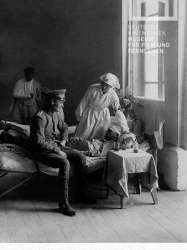
The Diary of Dr. Hart (1918)
, 1h22Directed by Paul Leni
Genres Drama, Romance
Themes Political films
Actors Heinrich Schroth, Käthe Haack, Dagny Servaes, Adolf Klein, Ernst Hofmann
Roles Producer
Rating58%





 Connection
Connection



